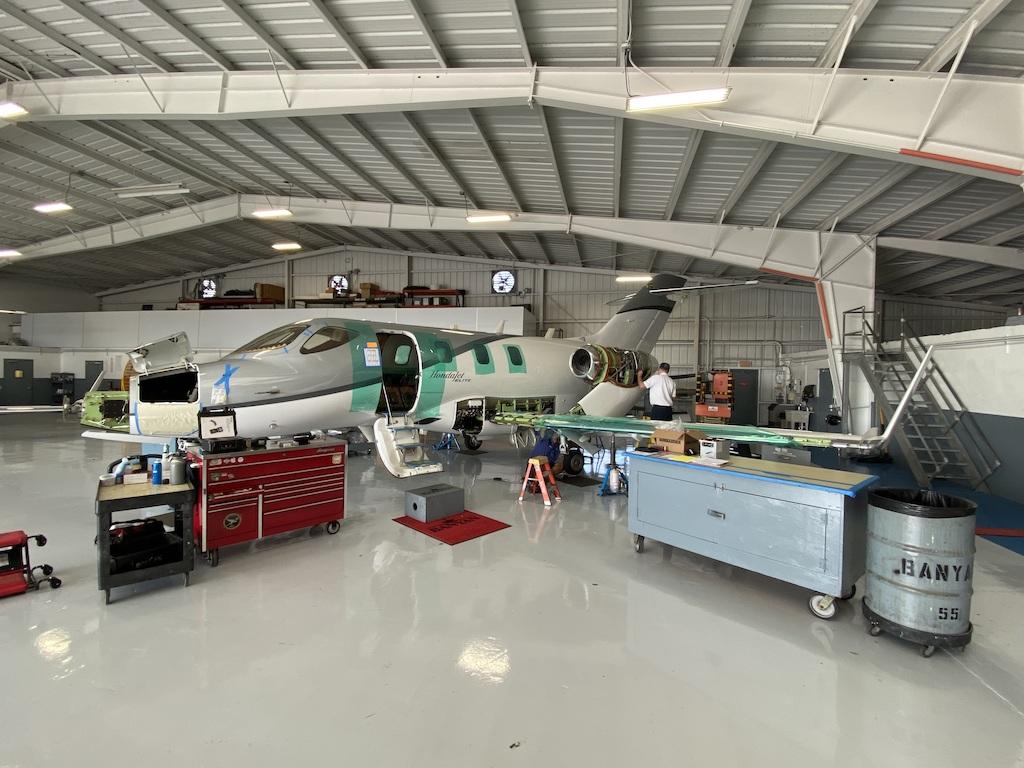
The first part of this article explained how airlines use predictive maintenance.
Business aircraft operators are just starting to realize the benefits of predictive maintenance.
“There are some systems on certain models of aircraft that are very good at predicting trouble points in engine performance and assist with the decision-making process of when to take a look inside the engine,” says Chris Bodine, vice president and general manager of StandardAero Business Aviation’s Augusta, Georgia, facility. “These systems are primarily looking at actual engine performance numbers and focused on changes in engine performance. They will track certain trends and provide alerts when there is a shift in performance.”
Ron Grose, Falcon program manager and technical specialist (retired) at Duncan Aviation in Lincoln, Nebraska, reports that during the past 15 years, more recording/data collection equipment has been installed on business jets. Most of the data is collected from system components for quick troubleshooting of a component failure. At the same time, he points out that the data collection devices resident on the Falcon 900EX EASy, 2000EX EASy and the Falcon 7X/8X models represent “the beginning stage” of applying predictive maintenance to business jets.
“The Falcon 7X and 8X are almost all-digital, with a considerable amount of data being monitored. The flight crew alerting system [CAS] messages, along with maintenance messages, are used to identify a system problem, the dispatch ability of the aircraft and for troubleshooting the system,” explains Grose, who continues to work for Duncan Aviation in a consultant role.
Grose reports that for the newer generation of business jets, aircraft systems are being monitored by a digital flight data recorder (DFDR), a central maintenance computer (CMC)--or similar device--and an engine data collection unit. The data analysis is performed by the system OEM upon receiving it from the customer--under the OEM’s maintenance service plan.
To illustrate, Grose says that, currently, the engine trend-monitoring data for the Falcon 2000EX EASy and 7X/8X is sent to an engineering group within Pratt & Whitney Canada for the PW308C and PW307A/D model engines. “That data can be downloaded to a laptop computer and sent to this group, or the aircraft can have a data transfer unit (DTU) installed to collect the engine parameters during flight and then download the data to this group using a cellphone service upon landing,” he explains.
As an example, Grose sees the use of predictive maintenance for engine monitoring when, for instance, data analysis shows hot-section deterioration, causing performance issues. “Usually, the operator will receive an email or phone call from the engine manufacturer giving a specific time to get the aircraft into a maintenance shop.”
Paul Rose, vice president of technical sales for Banyan Air Service in Fort Lauderdale, Florida, notes that the HondaJet HA-420 incorporates a system that can predict failures.
The HondaJet’s Garmin G3000 integrated avionics suite, Rose explains, includes a CMC that collects system data and compares it to predefined operational events, failures and CAS messages, as well as data required for routine maintenance and troubleshooting. The data can be accessed locally by the technician via the CDUs (control display units) as an aid to troubleshooting or downloaded on an SD (secure digital) card and sent to HondaJet for a deeper analysis. In addition, the data can be transmitted to the ground via a maintenance data link with Wi-Fi capability using the Garmin GDL-59 data-link unit.
“This central maintenance function also provides an engine trend-monitoring function in addition to monitoring other aircraft systems. This trend monitoring aids in the prediction of future system and component issues,” remarks Rose.
In fact, a routine CMC download on a HondaJet revealed that an engine fuel delta P sensor was starting to show high resistance. “This was an indication that a failure of the delta P sensor was imminent,” says Rose. “HondaJet Field Service immediately contacted us, and we changed it out before it failed. A failure of this sensor would have caused an AOG.”
According to Rose, the indication of high resistance on this sensor has HondaJet considering revising its inspection interval in the very near future.






